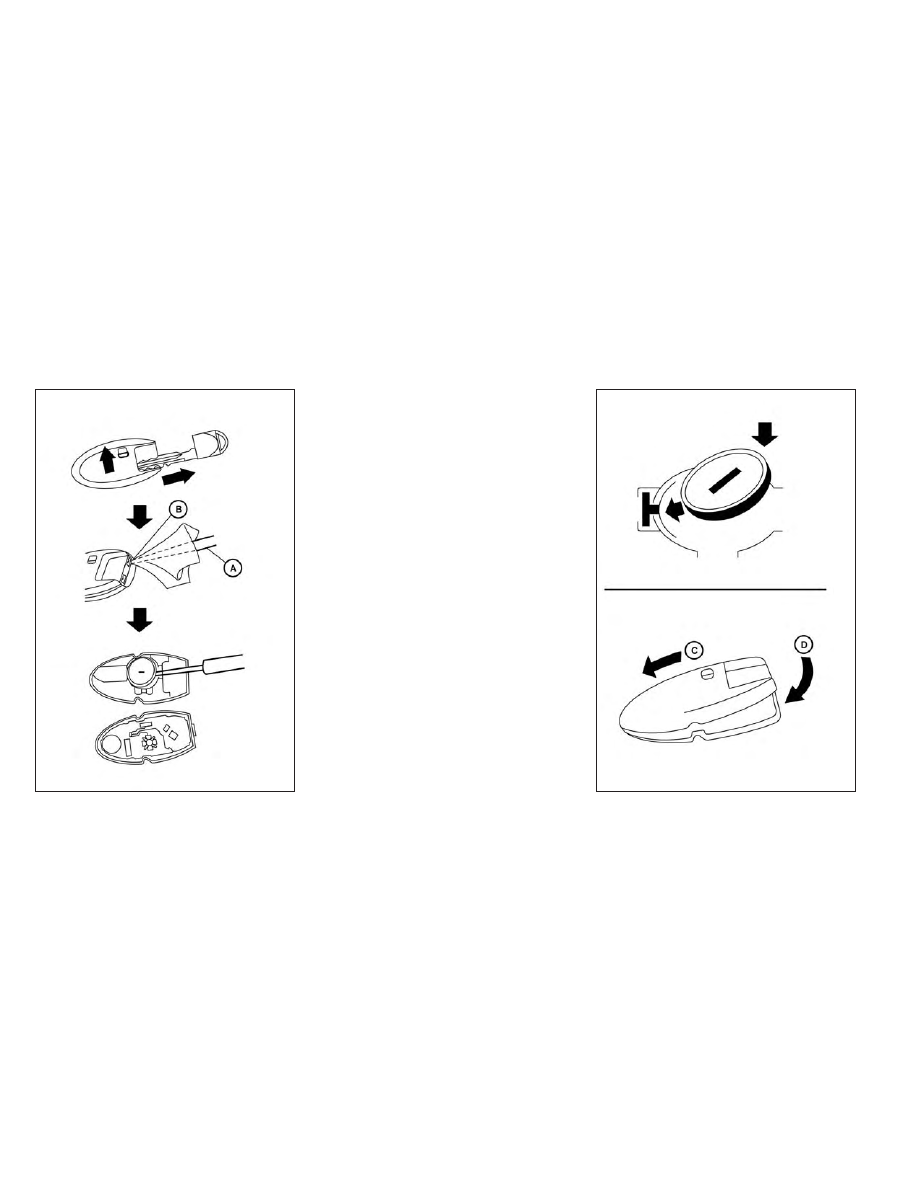Nissan Frontier (2022 year). Manual in english - page 28

NISSAN INTELLIGENT KEY®
Replace the battery in the Intelligent Key as
follows:
1. Remove the mechanical key from the
Intelligent Key.
2. Insert a small flathead screwdriver
O
A
into the slit
O
B
of the corner and twist it
to separate the upper part from the
lower part. Place a cloth over the screw-
driver to protect the casing.
LDI2001
LDI2637
8-24
Do-it-yourself